|
„Killer Signal Antenna“...
Killer Signal Antenna
by H.- Ingo W. Pallmann DL6IP

published in the June 2005 issue of the CQ-DL magazine
A hundred years ago on December 12th, 1901, Guglielmo Marconi in Canadian Newfoundland
some 2000 miles (or roughly 3200 kilometres) away from Cornwall received the first transatlantic radio transmission,
the letter "S" (Success), sent from British Cornwall across the Atlantic Ocean.
The receiving antenna was a 122m long wire fixed to a “Kluever Kite” that served as a sky-hook.
This law of physics is still true today:
A vertical antenna radiates at an especially
flat angle, ideal for DX-connections.
Vertical Lambda ¼ radiating antennas are commonly used for the upper bands.
But how would you put a Lambda ¼ or Lambda ½ vertical radiator in the 80m or even in the 160m-Band
into practice?
„Sky-Hook“...
Sky-Hook for the Antenna Wire
The solution is quiet obvious: With an end-fed wire antenna from a kite up in the sky led
down to the radio on the ground.
For the 80m-band accordingly at Lambda 1/4 a wire length of 20,8m (68.24 ft) is recommended. This may be achieved
by utilizing an extensive earth-net or counterpoise respectively in order to cover all short wave bands.
It's a moot point what length an end-fed wire antenna should have to avoid such an earth net resp.
counterpoise.
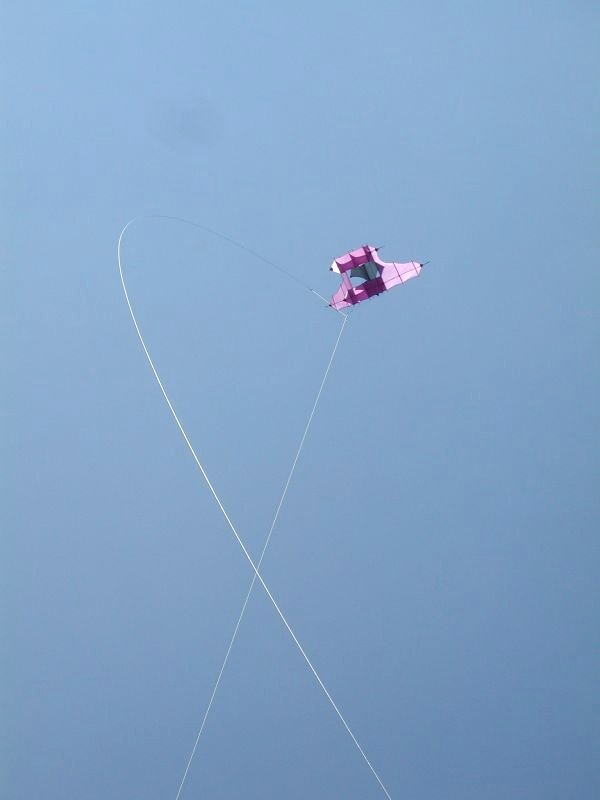 |
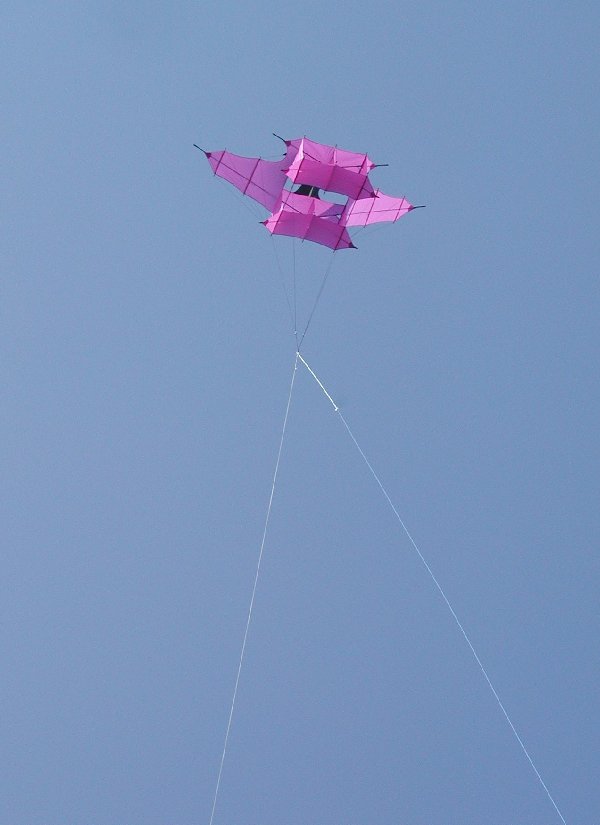 |
As an alternative, a wire Lambda ½ long would be most suitable for the lowest operating frequency.
When calculating the Lambda ½ length of an end-fed wire antenna at a cable cross section of 1.5 mm² (0.00232 sq in)
for the most practical operating frequency in the 80m-band, you will obtain a wire lenght of 41.32m (135.5643 ft).
„Perfect Wire Lenght for all SW-Bands“...
Perfect Wire Lenght for all SW-Bands
As previously described, the end-fed vertical wire antenna has a length of 41.32m (135.5643 ft) (Lambda ½ at 3.6MHz).
An extensive counterpoise is not required, as a Lambda ½ long wire always has at its operational
frequency and its multiples thereof always a very high resistance. Hence an Antennatuner must be
connected in between the antenna wire and the transmitter to match the 50 Ohm resistance of the radio
with the antenna wire´s very high resistance.
What would the antenna wire's resistance be for all the other bands?
- No worries ! - , because if the Antenna wire length is a multiple Lambda ½ of a preselected
operation frequency it will always result in a high resistance of the antenna wire.
At 21 MHz (15m) this will result in a sextuple of its Lambda ½ length. At 28 MHz (10m) it's the octuple
Lambda ½ length. On the 80m, 40m and 20m-band it is analogously.
That means our 41,3m (135.5643 ft) long antenna wire will always have a higher resistance than 50 Ohm and therefore
an extensive earth net / counterpoise will not be required.
„Bleeding Off Static Loads“...
Bleeding Off Static Loads
If you expose a conductor to high elevations, it will collect more and more static load with increasing elevation.
This may result in high currents, especially if thunderbolts within reach of a few miles or km discharge.
For this reason it is mandatory to connect the antenna wire to a bleeder resistor of minimum
1 M-Ohm which is connected to ground (Earth net / counterpoise).
As a substitute for an earth-net, larger metal objects such as i.e. railroad tracks, balustrades,
wire fences, water pipes etc., would also be suitable.
There are so many possibilities.
 |
 |
If you however disobey these rules, you'll possibly put your life at risk, at least you'll "fry" your
antenna tuner and / or your radio.
The bleeder resistor itself behaves neutral.
That is to say that neither while receiving nor transmitting
you will notice any noteworthy losses. The radio basically doesn't "see" the bleeder resistor at all.
For transmitting at up to 200 W PEP, a 5 Watt / 1 M-Ohm-resistor shall be utilized.
After all the theory now to practice. –
Never connect your radio to an antenna wire, or even touch the antenna wire prior to having
the antenna wire connected via a suitable bleeder resistor to ground!
„Cody-War-Kite, “King of Box Kites”“...
Cody-War-Kite, “King of Box Kites”
I have choosen the "Cody" kite as a "sky-hook", because of its legendary capability of lifting heavy
weights, and its well tempered flight quality even in heavy winds above 5 Beaufort.
My "Cody" Box kite with top sail has a wing span of 2.5m (8.2 ft).
The Cody box kite is named after his inventor "Samuel Cody" who indroduced his "Man-Lifter-Kite" 1901
to the world public.
In former times such kites got employed by armed forces that lifted scouts high up in the air to have them
explore the hostile groups behind the lines and report via phone to the ground what they have seen.
„Killer-Signal-Antenna“...
Killer-Signal-Antenna
I fix a 41.3m long antenna wire with a porcelain-insulator and a 3m (9.8 ft) long rubber cord, to relieve
the strain of possible wind gusts, at the root point of the kite.
The kite line should have a breaking strength of minimum 100 Kg (220 lbs.).
The antenna wire I selected is of a highly flexible silver coated insulated Cu-wire with a cross section of 1.5 mm²(0.00232 sq in).
The feed end of the antenna wire, also insulated with a porcelaine-insulator, is fixed in a strain relieved
manner to the upper insulated end of a 2m (6.56 ft) long telescope rod, which is secured in the ground.
The feed end of the antenna wire is connected via a 4mm (1/6") bunch pin plug to the "black box" at the upper end
of the telescope rod, which containes the above mentioned bleeder resistor and a SO-239 plug socket.
The bleeder resistor is connected to the earth net and the antenna wire is connected with an RG-58U
coax cable via a SG-239 "Smartuner" (automatic antenna tuner) to the ICOM "IC-706MKIIG" Transceiver.
„Earth-Net & Counterpoise“...
Earth-Net & Counterpoise
The earth-net is predominantly required to bleed the static load to the ground and comprises 16 individual
Cu-wires with a cross section of 6mm² (0.0093000186 sq in) 8 x 5m + 8 x 10m (8 x 16.4 ft + 8 x 26.2 ft) long,
which are star shape arranged from the center at the bottom of the telescope rod and fixed with large nails to the ground.
The smartuner and radio are connected to the earth net and optional to the car's body.
„Conclusion“...
Conclusion
With the Smartuner the antenna wire may be tuned within seconds to any selected frequency within the
SW-bands (also within the WARC-bands).
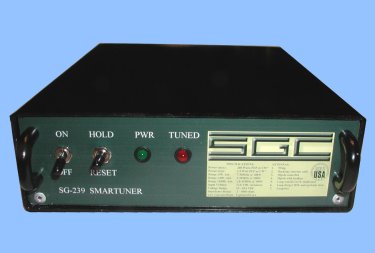 |
 |
The receiving signals are simply overwhelming.
All signals you may be used to receive in between S5 - S9
with your three-element tribander at home can now be received using the "Killer-Signal-Antenna"
at signal strenghts far above S9 ++
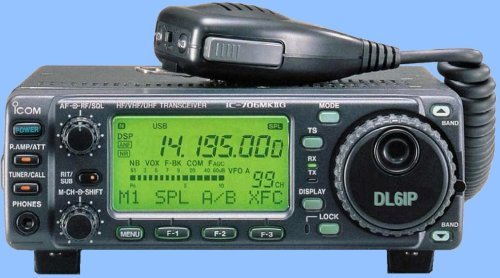
|
In one case, I had more than 30, partly extended QSOs within 4 hours not only with Ham's within Europe but also
multiple QSOs with North- and South America, Asia and Africa.
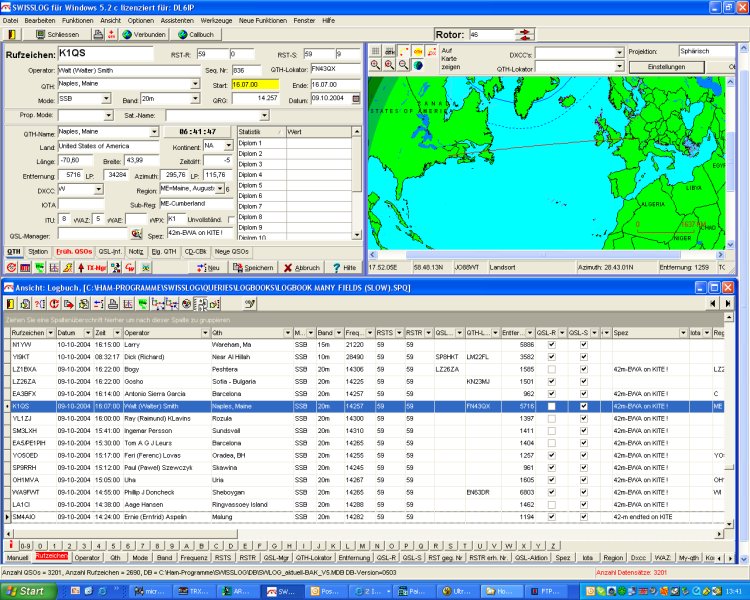 |
It's lots of fun to call CQ, CQ-DX de DL6IP / KITE and to suddenly be at that end of the world where
all the other OM's want to have a QSO with creating a massive pile-up.
You'll always get 59++ reports and you could doubt if they're all true, if there wouldn't be the
easyness in building up new contacts within seconds.
You can't really notice a directivity for sure, allthough you get the feeling there could be one in the
direction with the wind.
It's recommended to fly the kite in the open field, best on top of a hill; also it would be helpfull
to have another person available to help you with getting the kite assembled and the earth net put in place.
Kites of this or similar designs require wind speeds of 3-4 Beaufort = appr. 25-30 Km/hr (15-19 Mph) and more.
Such windspeeds may typically develope during the colder seasons.
Therefore it's recommended to QSO from the inside of
the vehicle, unless you belong to the species of the "YETI" that need such low temperatures to get
off the ground.
At the next opportunity you might here me on the SW-bands calling:
CQ, CQ DX de DL6IP / KITE.
|